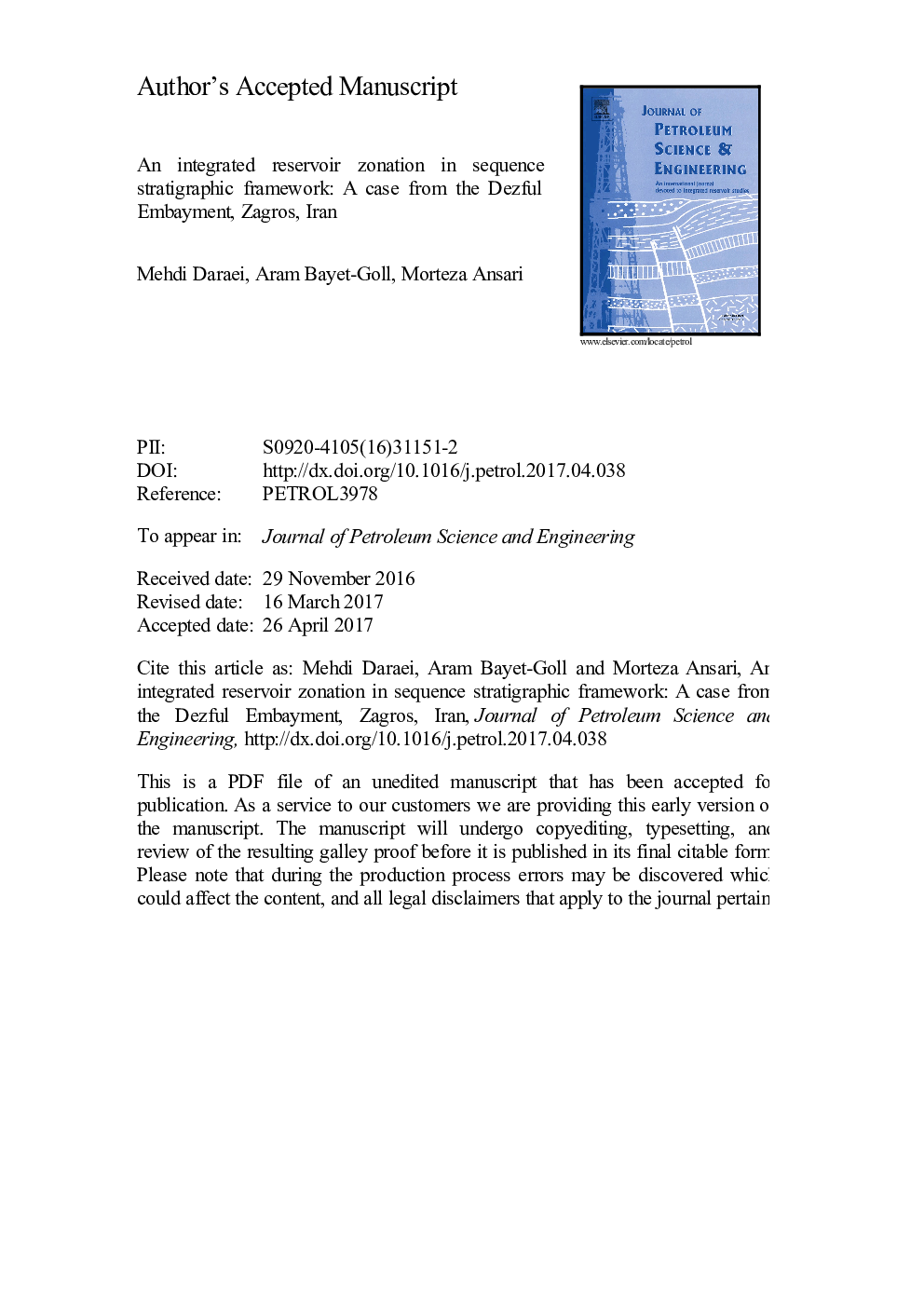| Article ID | Journal | Published Year | Pages | File Type |
|---|---|---|---|---|
| 5484222 | Journal of Petroleum Science and Engineering | 2017 | 39 Pages |
Abstract
This study focuses on reservoir rock typing of the Oligo-Miocene Asmari Formation in order to introduce a field-scaled reservoir zonation for the strata in one petroleum field of SW Iran, where the formation is composed of mixed marginal marine sand/sandstones and shallow marine carbonates, capped by the evaporite-bearing Gachsaran Formation. On the way, sedimentary and diagenetic aspects of the formation are presented to characterize the main geologic factors controlling reservoir attributes of the petroleum field. Then, an integration of three different reservoir rock classification methods is applied to identify speed and/or baffle zones of the reservoir. Based on the results, the main speed zones of the field are comparable to the siliciclastics of the reservoir whose distribution is the product of sea-level-controlled terrigenous supply to the basin. Although the carbonates have high storage capacity owing to noticeable early diagenetic dissolution, they possess low flow capacity due to isolated network of pore spaces; therefore, they make the baffle zones of the field. The five reservoir zones determined can be located in other parts of the field via well logs and/or the sequence stratigraphic framework.
Related Topics
Physical Sciences and Engineering
Earth and Planetary Sciences
Economic Geology
Authors
Mehdi Daraei, Aram Bayet-Goll, Morteza Ansari,
